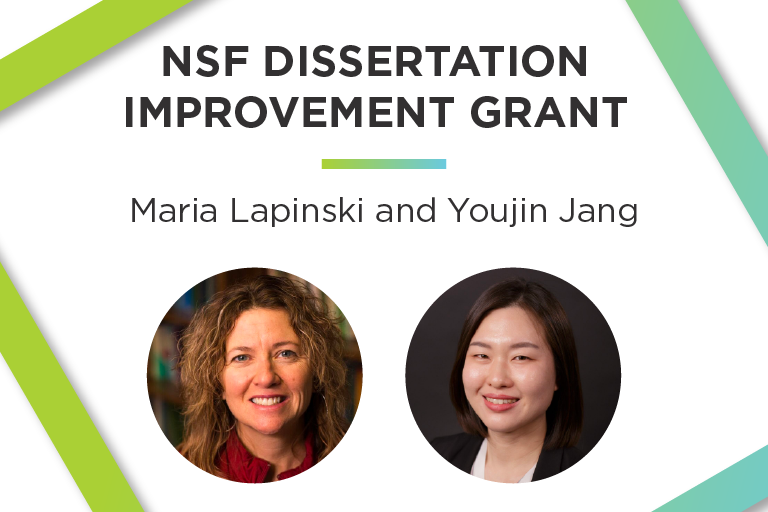Michigan State University Department of Communication researchers, Maria Lapinski and Youjin Jang, have been awarded a National Science Foundation (NSF) grant to study how anxious people seek and process information about environmental and health risks.
Exploring how anxious people process risk information
In January 2023, Youjin Jang, Ph.D. student in the Department of Communication and Maria Lapinski, Director of the Michigan State University Health and Risk Communication Center (HRCC) and professor in the Department of Communication, were awarded NSF’s Dissertation Research Improvement Grant. Their study will focus on the risk perception attitude (RPA) framework and aims to understand how anxiety affects how people understand and remember risk information, and the subsequent choices they make.
The study will center on two common anxiety-inducing behaviors: taking energy-saving measures to prevent blackouts in communities, and the prevention of type 2 diabetes. Using resources in ComArtSci’s CASE Lab with Professor Monique Turner, the team will conduct experiments via self-report measures of processing and response, eye-tracking, and physiological measures of anxiety — that is, they will ask participants questions, watch where their eyes look, and check how their bodies react to messages. They hope the findings from this project will contribute to designing better risk communication messages that target people who experience anxiety when exposed to such information.
Lapinski, who has been working with Jang throughout her doctoral studies, notes that fear-based messaging is common in health and environmental campaigns.
“We know that when people are fearful of something that’s very motivational, and a lot of the research has tried to figure out … how do you motivate people without causing them to be so afraid that they feel like they can’t do anything, and they shut down?” said Lapinski.
Jang is exploring the effects of messaging on people when they feel anxious, an emotion related to fear.
“Recently, the behavior I’m most interested in is information seeking,” Jang said. “When people are anxious, they have attentional biases. This is really interesting for me; when you’re anxious you tend to focus on the information related to the threat, rather than what you can do, because it is consistent with what you think. You are nervous, so you tend to focus on what makes you nervous. But it doesn’t help you, right? Even though you might have a lot of information, it doesn’t help you. I want to understand those mechanisms so that I can help people to better process information.”
“This is an idea that she’s been thinking about and working on, and she really led the development of the grant,” said Lapinski, noting her support. “It’s not often that graduate students apply for external funding like this from a national funder for their work.”
Jang said the team will test existing theories by providing participants with efficacy messages: a type of communication that is designed to provide people with practical steps they can take to reduce risk, and to help them feel empowered to take those steps. “Efficacy messages can help people process information better, according to the theory,” she said.
An efficacy message about preventing the onset of type 2 diabetes might emphasize making small changes to one’s diet and exercise routine, along with reassurance that taking these actions can make a real difference. Likewise, an efficacy message about energy conservation might provide small steps to reduce one’s energy use, such as turning off lights when not in use or adjusting the thermostat a few degrees, and how those minor changes can make a big impact on preventing blackouts in the community. These messages are meant to help people feel more in control and confident in their ability to protect themselves and others from harm, underlining the importance of health communication — and this research — in promoting healthy behaviors.
Jang is grateful for faculty support in this endeavor. “I really appreciate Dr. Maria Lapinski, who is my advisor, and Dr. Monique Turner, who really inspired me. I didn’t realize that I could use eye trackers or physiological measures when I conduct the study, but she opened the possibility for us, so I was able to propose that to the National Science Foundation. I really appreciate them, and Dr. Winson Peng and Dr. Meredith Gore, who are always supportive and provide insightful feedback.”
— Jessica Mussell
